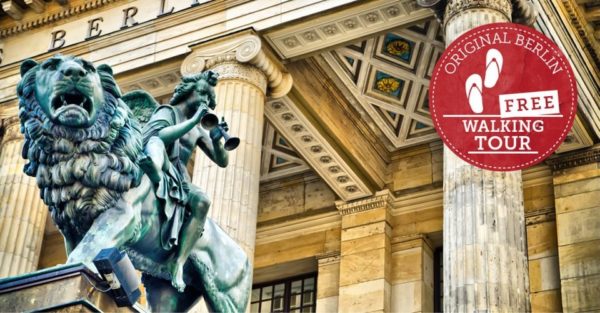If you’ve ever wandered the streets of Berlin, you may have noticed that the city’s streets don’t have your typical, boring names like First Street or Main Street. Instead, you’ll find a rich tapestry of historical, cultural, and political stories woven into every street sign. Join us as we dive into the fascinating world of Berlin’s street names and uncover the secrets they hold.
The Historical Significance
One of the most intriguing aspects of Berlin’s street names is their historical significance. Many streets are named after key figures or events that have shaped the city’s past. For instance, Unter den Linden, one of Berlin’s most famous boulevards, is named after the linden trees that once lined the street. This avenue has witnessed countless historic events, from royal parades to modern-day protests.
Another notable example is Friedrichstraße, which is named after Frederick the Great, the Prussian king who extensively shaped Berlin’s development in the 18th century. Walking along Friedrichstraße today, you can still feel the echoes of its storied past.
The Cultural Influence
Berlin’s street names also reflect its vibrant cultural heritage. In the district of Kreuzberg, you’ll find street names paying homage to famous artists, musicians, and writers who once called Berlin their home. Take Oranienstraße, named after the Dutch royal family of Orange-Nassau, or Schillerstraße, named after the esteemed German poet Friedrich Schiller.
Moreover, street names in Berlin often honor individuals who played significant roles in promoting human rights and democracy. Rosa Luxemburg, a prominent socialist and feminist, is commemorated with the Rosa-Luxemburg-Straße, while Martin Luther King Jr. is remembered with a square bearing his name.
The Political Legacy
As the capital of Germany, Berlin has witnessed its fair share of political change and upheaval. The city’s street names reflect these shifts, ranging from the days of Prussian monarchy to the divided years of the Berlin Wall and the reunification that followed.
A prime example is Bernauer Straße, which became a symbol of the division during the Cold War. This street marked the border between East and West Berlin, and today, it stands as a reminder of the city’s tumultuous past.
Famous Squares and Key Landmarks
It’s not just streets that have intriguing names in Berlin; the city is also home to numerous squares and landmarks with their own stories. Alexanderplatz, for example, is named after the Russian emperor Alexander I, and it has served as a central hub of activity for centuries.
An iconic landmark, Brandenburg Gate, is a prominent symbol of Berlin. This neoclassical monument stands as a testament to the city’s history and reunification. Its name originates from the city gate that once formed part of the old fortified wall surrounding Berlin.
Other notable landmarks include the Reichstag, home to the German parliament, and Checkpoint Charlie, the formerly infamous border crossing between East and West Berlin during the Cold War.
Tips for Exploring Berlin’s Street Names
Ready to discover the stories behind Berlin’s street names? Here are some tips to make the most out of your exploration:
1. Take a Guided Tour
Consider joining a guided tour specifically focused on Berlin’s street names. Expert guides can provide in-depth knowledge, insights, and context that can make your experience more meaningful.
2. Do Your Research
Before you set off on your own, do some research on the historical figures, events, and cultural references associated with the street names you’re interested in. This background knowledge will enhance your understanding and appreciation.
3. Keep an Eye out for Plaques
As you walk through Berlin, keep an eye out for plaques or informational signs that provide additional context about the street names. These plaques often offer fascinating details and stories you may have otherwise missed.
4. Embrace the Unexpected
While some street names in Berlin may seem more straightforward, others might surprise you. Embrace the unexpected and be open to uncovering lesser-known stories and hidden gems as you navigate the city.
So, the next time you find yourself in Berlin, take a moment to appreciate the city’s unique street names. They tell tales of struggle, triumph, and artistic brilliance, all while serving as a testament to Berlin’s rich and complex history.






Leave a Reply